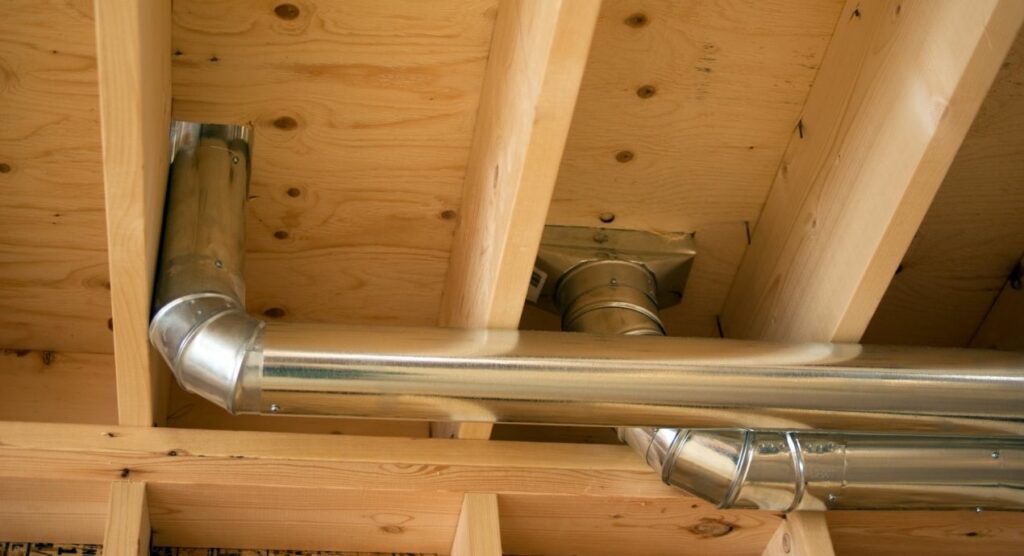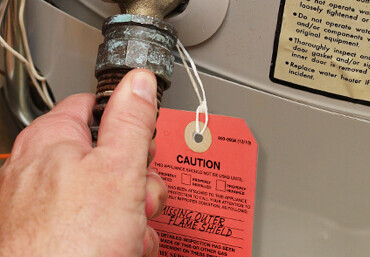Does AC use the same ducts as the furnace?
The answer is simple: Absolutely yes! The same ducts are used for both furnace and AC. Having trouble with vents can cause problems for either system. If experiencing issues with an HVAC unit, you may want to seek out an experienced professional like Smile HVAC.
The two major parts of your HVAC system, the air conditioning system, and the furnace, are controlled and connected for high efficiency. In general, the functionality of these units is different, and most of you may not know whether they are connected or not.
Knowing how your air conditioning and furnace are interconnected can help make maintenance and HVAC installation choices that will result in the best possible comfort in the home. Practically, both AC and furnace work differently, but they still use the same duct. Obviously, in scorching hot weather, you’ll need to turn off your furnace and turn on your air vent instead.
Although the indoor unit is not connected to the furnace at all, both the furnace and AC require the same distribution system, including filters, fans, ducts, and vents to deliver hot and cool air throughout your home. Still don’t understand how your furnace and air conditioning system interact! Take a look at the information given below.
Importance of The same ducts for AC and furnace
Your AC and furnace are essential components of your HVAC system, as stated earlier. They use the same air ducts within your property to facilitate hot or cool air, helping you achieve a desirable temperature to keep the property comfortable. Just like the human body, the heating and cooling system is the lungs, while the ductwork is the source of your home’s air.
How do furnaces and air conditioners work in partnership with your HVAC system?
Let’s put it in simple terms: Both furnace and air conditioner are essential components of your HVAC system, which refers to the heating, ventilation, and air conditioning system.
While the air conditioning component cools the refrigerant with an outdoor unit, the furnace, on the other hand, works indoors with coils and fans. The ductwork of an HVAC system circulates air throughout the home, allowing your home to be cooled or heated as needed.
Forced Air versus Central Air: Distinguishing Two Common HVAC Systems
Learn the difference between forced air and central air systems to know how they play their own role in your HVAC system:
Basically, a forced air unit comprises entire HVAC systems that facilitate temperature-driven air within the property through vents and ducts. Heat pumps or furnaces are examples of forced air units.
On the other hand, a central air conditioning unit requires a closed loop of moved or refrigerated air to spread cool air in your home. Ultimately, both central air systems and forced air or furnaces use the same components to heat and cool your property.
A central air system’s components, like compressors, condensers, fans, and evaporator coils, attempt a few functions at the same time. These components reflect warm air inside while venting out, and then the vents draw cool air back in.
Simply put, your central AC system is self-regulating of your furnace. Note that the outdoor unit is not connected to the furnace in any way, but they both require the same spare parts, such as a plenum, vent, and duct, to provide cooled air.
In the case of other air conditioning systems
Typically, the delivery functionality of the furnace is precisely the same, but your AC system may vary due to the different types available, such as split, standard, and packaged.
The split air conditioning unit comes with both an indoor and outdoor unit, with the outdoor having the condenser coil and compressor and the indoor unit facilitating the distribution of hot air from the furnace. A packaged AC system contains all the parts but has no outdoor unit.
Can a furnace run without an AC, and can an AC work without a furnace?
It is not necessary that the HVAC system run similarly at every home. Homeowners can have either an AC or a furnace, depending on the outdoor conditions where they live. Some prefer a single-room AC mounted on a wall or window opening.
If you live in a warm climate, investing in a furnace to keep the property warm is not mandatory. Instead, you can go with an affordable option: ductless mini-split AC or room AC.
Air conditioner and furnace are different units: Air conditioning system and furnace are individual parts of your HVAC system. They both use vents and ducts to spread air within your house. Your AC and furnace are both connected to each other, and this is because they use the same infrastructure, however, they still work for each other.
Is it necessary to run the furnace and air conditioner simultaneously?
Well, the answer is no! Generally, you don’t need to have both units working at the same time. If you do so, it will affect the objective of the home’s cooling and heating, as well as cause additional wear and tear in your HVAC system.
If the temperature inside your home has gotten warm enough and you no longer need to heat your home, you will need to turn on the AC until the cooler months return. In the summer, you need to turn off any humidifiers connected to your furnace, as one of the jobs of your air conditioning system is to dehumidify the air.
During the colder months, you should have a humidifier to circulate some moisture into the atmosphere, making your property feel warmer and improving overall comfort.
Is it vital to replace an air conditioning and furnace at the same time?
No, you do not need to change them at the same time. Doing so, in most cases, makes sense, and that’s because having an equally fitted system gives you shared efficiency and energy savings. Leaking vents or ducts and failure of the distribution unit can cause inconvenience, increased electricity bills, and reduced efficiency. Installing a furnace with high-efficiency capabilities can help you save money and electricity in the long run. But make sure that it is installed well enough.
Bottom line: Desirable results from interdependence
As discussed earlier, your furnace and air conditioner are connected components of your home’s HVAC. Since the HVAC system connects both the cooling and heating units of your property, keeping it well-maintained ensures the best performance for the long term. If any of these parts become damaged, it may cause further problems or damage to others. For instance:
- Inadequate installation of AC: Improper installation can cause cold air to blow into your furnace in the winter, making it difficult to operate.
- Issue with ductwork: If your ductwork is cracked, it could be causing a lack of cool or warm air in your basement.
- Furnace fans: If furnace fans are not working, the cool air generated by your AC will not be able to reach your property.
- Faulty thermostat: Be sure to set the thermostat at the right temperature to achieve desirable heating and cooling results. Otherwise, you would have to compromise with comfort.
- And if you experience poor performance from your air conditioning system or furnace, call a Smile HVAC expert. Our professional HVAC technicians have the skills to resolve the worst and most complex situations. Since both the furnace and AC use the same duct, a problem with the vent can cause severe issues. Therefore, inspecting these units periodically or having experienced technicians work with them is crucial.
If you are looking for a furnace repair service in Toronto, Call us.




